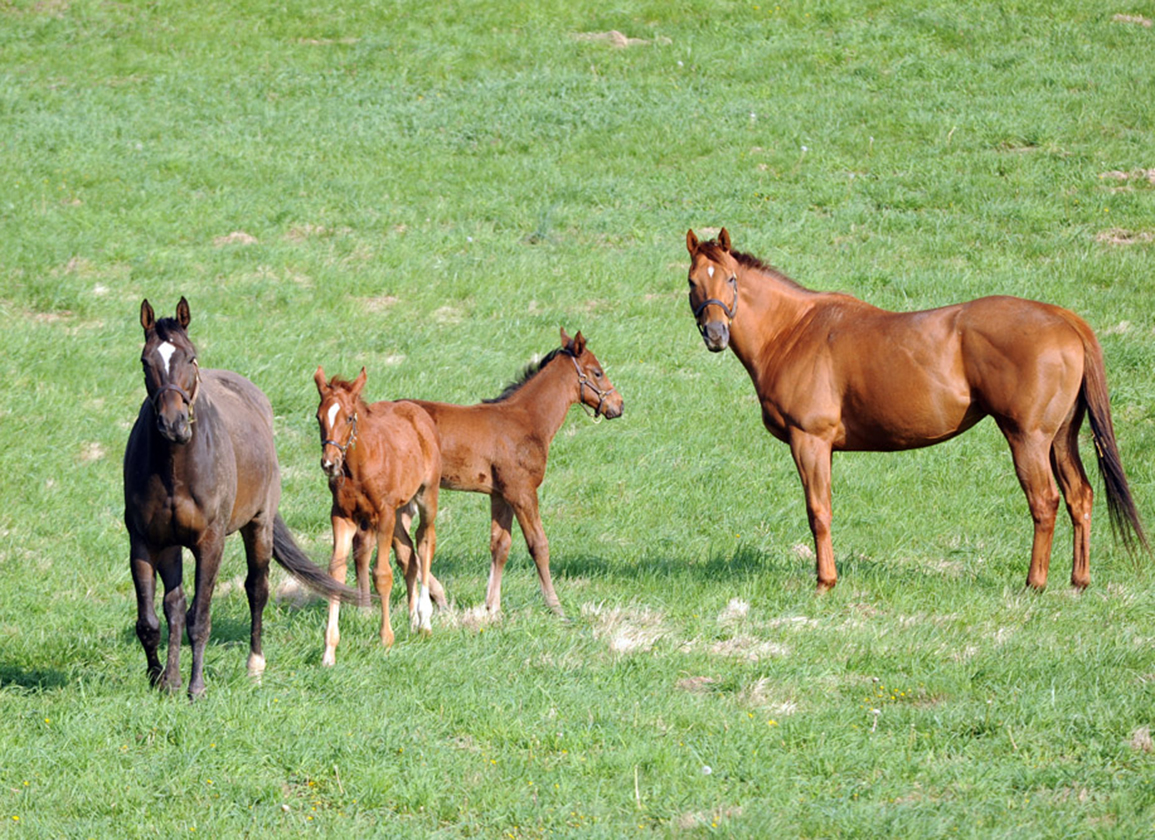By Donncha McCarthy
In Global Views, Godolphin Flying Start trainees provide insight into practices experienced and observations taken on their worldwide travels. Second-year trainee Donncha McCarthy discusses the challenges of the shorter Southern Hemisphere covering season.
Godolphin Flying Start is an excellent way to learn and experience the Thoroughbred industry worldwide. As we are currently in the Australian phase, I have been looking into some differences between the Northern and Southern Hemisphere breeding schedules, and how the shorter Australian breeding season affects stud farms and stallions. I then offer solutions to the challenges Australian breeders, stud farms and stallions face.
Northern Hemisphere Thoroughbreds turn a year older on Jan. 1, with the covering season officially opening on Feb. 14; however, mares will sometimes be covered earlier, but their foals are not permitted to be registered as born the following year if they foal prior to Jan. 1. In the Southern Hemisphere, all Thoroughbreds have their birthday on Aug. 1, even if they are foaled in July, but no Thoroughbred can be bred before Sept. 1. Aug. 1 has been the official birthday of Thoroughbreds in the Southern Hemisphere since the inception of the Stud Book in 1860, but the strict date of covering only came into play in 2001. This rule was enforced by John Digby (keeper of the Stud Book) when he discovered an extraordinary number of foals were born on Aug. 1. He then decided the easiest way to regulate the birthday of foals was to set a start date to the covering season.
The season in Australia, as a result, is much shorter than in Europe. If you consider the commercial European season to take place between Feb. 1 and June 1, there is a total of 120 days when a mare can conceive. In a typical mare, this allows for 5.7 breeding cycles. In the Southern Hemisphere, a commercial breeding season usually runs from Sept. 1 until Dec. 1, a total of 90 days and 4.3 cycles for the mare to conceive. This shorter time frame puts significantly higher pressure on vets, stud farms and stallions to achieve pregnancies.
There are several reasons why Australian breeders are reluctant to breed into December. First, it's less profitable to have a November yearling versus an August yearling in the sales ring: over the last five years, November foals were 36% cheaper than August foals at all yearling sales.
Second, they are a lot less likely to be accepted at major sales unless they are exceptional types or have deep pedigrees; only 3.8% of the yearlings at the recent Magic Millions Gold Coast Yearling Sale were November foals. The whole Australian breeding model at present focuses on 2-year-old speed and it is widely accepted that November foals are at a disadvantage during their 2-year-old career.
I believe another reason for decreased breeding in December is due to lack of staff. By Dec. 1 most farms have begun on-farm inspections for Magic Millions, which means more staff will switch to yearling operations.
The European model of breeding for 3-year-old Classics allows breeders to cover into June and beyond as later foals have more time to catch up with their peers. The additional month is beneficial to the welfare of stallions and mares. There is less pressure on stallions to cover large books over a short period, which leads to a positive correlation with fertility and libido.
I do not believe the Australian breeding sector can sustain the model they are using; however, I believe there are a few possible solutions.
First, stallion farms could blanket discount any mares covered in December to incentivise breeders to cover later in the year and offset the discount they are likely to receive in the sales ring as yearlings. A possibility for a scheme to encourage the racing of November foals would also incentivise buyers, which would increase the number of mares bred in December.
Second, moving the date of birth of Southern Hemisphere Thoroughbreds to July 1 and setting the covering date to Aug. 14 in line with the Northern Hemisphere. This would give mares over five cycles to conceive, which would increase conception rates, decrease the pressure on stallions and decrease the pressure on vets and farms.
Conversely, this does raise the issue that a longer season may mean more mares covered by individual stallions, but I believe overall it is for the benefit of the Australian industry. Stallions are under far more pressure now than they were in 2001. There are half as many stallions covering–stallion numbers in Australia are down 53% in the last 18 years. The foal crop is also decreasing rapidly; it is down 29% since 2001 to just under 13,000.
This is a serious issue for the Australian industry. The extra time on either side of the season would increase pregnancies and thus increase the foal crop.
Not a subscriber? Click here to sign up for the daily PDF or alerts.






